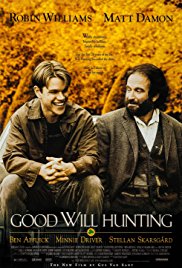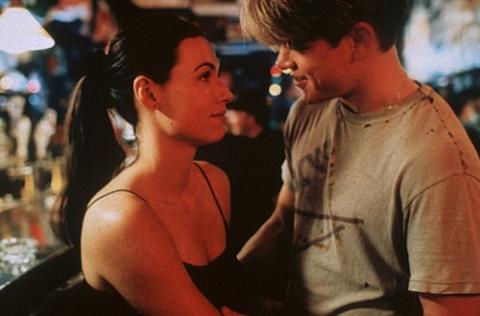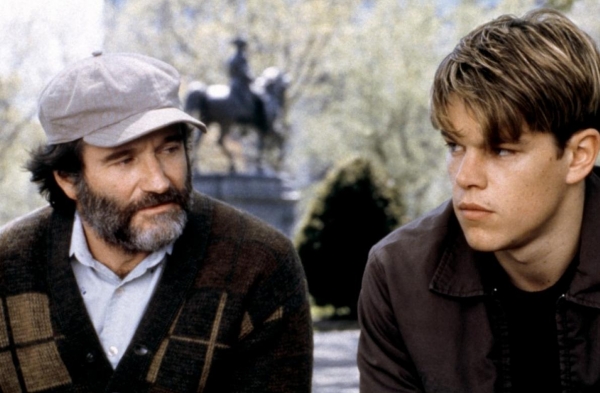Child Abuse
1. Is a child ever responsible for the abuse perpetrated upon him or her by an adult?
Suggested Response:
No. It is the adult who has the responsibility not to abuse a child. Adults are more powerful, older and more experienced than children.
2. Describe the effects of the beatings and parental neglect suffered by Will.
Suggested Response:
They made him distrustful of people other than males his own age. They made it so that he could not form genuine attachments to adults, especially women. They made it difficult for him to control his anger.
3. What percentage of children who are sexually abused report the abuse?
Suggested Response:
About 10%.
4. Approximately how many girls will be subject to unconsented sexual contact by an adult? Approximately how many boys will suffer this fate?
Suggested Response:
The rule of thumb is one in three girls and one in six boys.
5. Describe the mechanism by which child victims of physical abuse come to blame themselves for the abuse.
Suggested Response:
See Why Abused Children Blame Themselves section of the Learning Guide.
6. Describe the mechanism by which child victims of sexual abuse come to blame themselves for the abuse.
Suggested Response:
See Why Abused Children Blame Themselves section of the Learning Guide.
Parenting
7. Explain the importance of promptly giving an infant consistent attention and gratification of the basic needs for food, sleep, warmth, etc.
Suggested Response:
See the Helpful Background Section, paragraph 5.
8. Why was it important for Sean to describe his relationship with his wife to Will?
Suggested Response:
An important part of parenting is to provide children with role models and a fund of stories to guide them in decisions they make in their own lives. Will had never seen a strong, empathic and loving relationship between a man and a woman and didn’t know what it was like. Sean provided him with that knowledge vicariously. Will used that emotional knowledge to gather enough trust to follow Skylar to the West Coast.
9. When a child is physically abused by a parent, what are some of the internal scars that are left?
Suggested Response:
They are lack of self-esteem and self-blame for the abuse. In extreme cases, the child will develop an attachment disorder.
Marriage
10. Do you know anyone who has a marriage like the marriage that Sean described? Is it possible?
Suggested Response:
There is no one correct answer to the first question. The answer to the second question is “yes”, there are many marriages like that.
11. Can marriages and romantic relationships between people of different classes, such as Skylar and Will, work out? What is special about these marriages?
Suggested Response:
This question is great for developing class discussions. Some kids will say that it’s impossible and others will say that it can be done and has been done millions of times. Whether one thinks that it is possible or impossible, the differences can make a marriage or a relationship more difficult. There is less in common and there are more compromises to make. All couples bring different “scripts” to their relationships based on their families of origin. Some of the scripts reflect emotional dynamics (loud, demonstrative, argumentative vs. restrained, cool, polite). Some scripts may be class-based and others may simply be differences in approach. In addition, the relatives may have problems with class-based differences.
Romantic Relationships
12. What did this movie teach you about romantic relationships?
Suggested Response:
You have to be willing to risk and you have to be willing to love. Your partner needs to be able to take risks as well.
13. Compare the relationship between Will and Skylar to the relationships with women of Will’s three friends.
Suggested Response:
What we are shown of the relationships that the friends have with women is that they are very shallow. Will’s relationship with Skylar has the possibility of becoming a strong empathic loving relationship.
Fighting
14. Why is fighting dangerous?
Suggested Response:
Your opponent might be like Will Hunting and unable to manage his anger. If he wins, he might not be able to stop until you are dead or seriously injured. In the fight on the basketball court it was a good thing Will didn’t have a weapon and it was a good thing that his friends pulled him off when they did. Otherwise, the guy who beat Will up in kindergarten would have been dead.
Friendship
15. Both Will and his friend Chuckie were extraordinary in some ways. We know that Will was incredibly intelligent. How was Chuckie extraordinary?
Suggested Response:
Chuckie was mature and nurturing beyond his years. He could see that what was good for Will was beyond his own horizons. He did not react defensively to this but instead, he encouraged Will to reach his potential. Chuckie proved himself to be a true friend to Will because he encouraged Will to do something that would inevitably take Will away from their friendship.
16. Were Professor Lambeau and Sean McGuire friends? What does this story show about their relationship?
Suggested Response:
They were friends because of the tie of personal history. Their friendship was complicated by competition. It was not a strong active friendship like that between Will and Chuckie but there was a bond of shared experiences and affection. At the end of the movie, they appeared to reconcile.
17. Sean described Chuckie’s relationship with Will as that of family, implying that he was absolutely loyal to Sean. Is absolute loyalty a good thing in a friendship or even in family relationships?
Suggested Response:
There are limits to loyalty: ethics and morality. What is to be given without question is love and affection. One should not do something unethical to support a close friend or family member. (For example, Chuckie should not have supported Will in starting the fight against the man who beat Will up in kindergarten.) However, unless the friend or family member has done something heinous, love and caring for them as a human being should not be withdrawn. Even if they do something terrible, like participating in genocide, a strong argument could be made that they still deserve affection as human beings if they repent and seek to make amends.
Male Role Model
18. It has been said that male maturity involves being responsible, caring and emotionally available. Which of the characters in this film most completely approached that goal at the beginning of the film? What about at the end?
Suggested Response:
At the beginning of the film it was Sean McGuire. He was a man who understood that maturity meant being in touch with his feelings. He was responsible and caring. The second character to approach this goal was Will’s friend Chuckie. While he participated in the male culture of cruelty with girls and with Morgan, he was a caring friend to Will. He acted in a responsible and caring manner when he encouraged Will to break out of the Southie lifestyle and engage his possibilities. At the end of the movie, after the psychological treatment, Will had a shot at also becoming responsible, caring and emotionally available.
19. No one in this film is perfect. But who is the best male role model in this film? Why?
Suggested Response:
The best male role model is Sean McGuire. See response to the preceding question.
Talent
20. Did Will Hunting have a responsibility to himself or to society to develop his talent to solve math problems?
Suggested Response:
There is no one correct answer to this question.
21. [For students who have seen or read Amadeus.] Compare Professor Lambeau to Salieri in Amadeus.
Suggested Response:
Both Lambeau and Salieri saw genius in another person that easily surpassed anything that they could hope to accomplish. However, whereas Salieri tried to undercut Mozart, Lambeau only tried to mentor and help Will become a great mathematician.
Breaking Out
22. Often, characters who break away from their home cultures and explore new ways of relating to the world find resistance from their friends and family. How are the events of this movie different than that situation?
Suggested Response:
Will’s family was Chuckie, who saw that Will’s future lay outside of Southie and who encouraged him to make the break.
23. During most of the movie, what was keeping Will from entering the new (for him) intellectual/academic culture?
Suggested Response:
His attachment disorder made him fear to develop meaningful relationships with adults and women. Will had created a situation with his life of low skilled jobs, a group of three male friends, and reading alone. This world felt safe to him. (There were also dissatisfactions which is why he solved the math problems on the chalkboard at MIT (a cry for recognition), why he pursued a relationship with Skylar, and why he continued in therapy with Sean.) However, if Will really committed to this new culture he could not be sure to control the situation. He would have to interact with people of intelligence (though almost all would not be as intelligent as he), who were trained and who demanded relationships that were different from than the relationships of his status quo.






